The little things are important
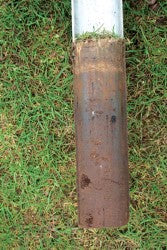 Having taken your soil samples and had them tested, you should have recorded levels for the following, pH, cec, organic matter, Nitrogen (N), Phosphorus (P), Potassium (K), Calcium (Ca), Magnesium (Mg), Sulphur (S), Zinc (Zn), Manganese (Mn), Copper (Cu), Iron (Fe), Boron (B) and Sodium (Na). All of these levels are important in the management of high quality turf.
Having taken your soil samples and had them tested, you should have recorded levels for the following, pH, cec, organic matter, Nitrogen (N), Phosphorus (P), Potassium (K), Calcium (Ca), Magnesium (Mg), Sulphur (S), Zinc (Zn), Manganese (Mn), Copper (Cu), Iron (Fe), Boron (B) and Sodium (Na). All of these levels are important in the management of high quality turf.
Oxygen, the most important nutrient of them all
A comprehensive soil test shows most of the nutrients required for healthy turf, however, we cannot test for the most important nutrient, oxygen.
It is vital that the turf manager conducts mechanical aeration as, not only will this extra oxygen benefit the plant, it will also free other nutrients within the soil. The comment that demonstrated to me the importance of professional turf managers was from a golfer; "We had brilliant greens and then he made holes in them". I pointed out that it was the other way round, "he made holes in the greens, then they were brilliant". I tell all the turf managers that I work with that, the world's leading sporting venues who charge higher prices to use their facilities, often conduct the most aeration as they understand that this will provide better facilities for everyone, this is despite the fact that they risk upsetting customers who are using the facilities following the aeration.
A rootzone starved of oxygen will not sustain healthy turf. All forms of life require oxygen.
What's in the water?
If your soil test results show a level that is a well outside the targets that you have set, test the water that you use for irrigation and test the other products that you apply in bulk, such as topdressing.
A course that I advise in the south of England had very high levels of a number of nutrients, these we flushed with great success over the winter only to find that the levels rose again during the following summer. This was unexpected as the nutrition programme contained none of the nutrients that had been in excess. At a loss to explain this, we tested the irrigation water and found that the nutrients were contained in the water. If this is the case, you cannot change your water but you can ensure that you do not add nutrients that are going to become excessive and lock up other nutrients within your rootzone.
Don't panic, you can sort it out and it wasn't your fault in the first place
When you receive the results, if some or many of the levels are not what you targeted, the first and most important thing is don't stress out. Remember that the turf is still growing, and you are now in a better position to manage your turf as you know what the problems are.
The vast majority of imbalances within the rootzone are caused by factors that are outside your control. These include the quality of the rootzone or soil used during the original construction and, as we have discussed, the irrigation water.
You cannot change these factors, so learn to live with them and manage what you have and not what you would like to have.
A Course Manager with a golf course on the east coast of Scotland received the results from his soil test, the calcium levels all showed the same figure, 10,000. I called the laboratory and suggested that they had made a mistake as the levels couldn't all be 10,000. They agreed the levels could not all be the same. As they measured up to 10,000, and all the samples exceeded this level, they had shown them all to be the same!
Further research showed that the greens had been built on crushed shells from the cockle industry. These shells, whilst being virtually pure calcium, are insoluble, so the levels were not harmful to the turf. In fact, they assisted with providing a high quality free draining surface.
The additional testing that we did on this occasion included a soluble paste test, whereby a paste is made with the rootzone and the irrigation water from the site. This is then tested to see what is soluble and, therefore, available to the plant. The calcium was not soluble, and a leaf tissue analysis showed a deficiency within the plant. Again, this was not the course manager's fault and it was easy to resolve.

Justus von Liebigs drum
Justus Von Liebig, generally credited as "the father of the fertiliser industry" formulated the law of the minimum. If one nutrient is missing or deficient, plant growth will be poor, even if the other elements are abundant.
Liebig likens the potential of the plant barrel with staves of unequal length, the capacity of this barrel is limited by the length of the shortest stave (in this case phosphorus) and can only be increased by lengthening that stave. When that stave is lengthened, another one becomes the limiting factor.
The deficiency tests at Yara
In trials conducted by Yara UK, a global plant nutrition company, on dwarf rye, each pot was deprived of a different nutrient (as shown in the images). This shows in a graphic way that shortages of nitrogen, potassium, sulphur and magnesium had the most dramatic effect, but a shortage of any nutrient had an impact.
What they all do
pH - Knowing the pH level is an essential aspect of managing turf. The finer grass varieties, such as fescues and bents, require an acidic rootzone of around 6. However, if the rootzone becomes too acidic, it will start to affect the availability of the nutrients. At a pH of 4-4.5, the availability of nitrogen, phosphorus, potassium, sulphur, calcium, magnesium, manganese, boron, copper, zinc and molybdenum are all reduced.
cec - This is the abbreviation for cation exchange capacity, the measure of the rootzones ability to store nutrient. A clay or organic soil will have a high cec of up to 20; a sandy soil will have a cec as low as 2 or 3.
Many turf managers ask me "What is the optimum cec?". There is no ideal cec, there is only the cec that you have, and you must work with that level. So, if your cec is low, feed little and often. There are several ways of increasing your cec, which will increase the benefit you receive from your applied nutrition as less will leach.
Organic matter and clay are the main methods of increasing the cec, however, it is important that you do not adversely affect the drainage by applying the wrong solution. The most commonly used methods of increasing cec are shown in the table below.

Organic matter - Extensive research has been conducted as to the optimum levels of organic matter. The majority of this research indicates that a level of 5% is correct.
My own opinion on this is that a level of 5% is ideal in Florida where most of the research has taken place but, for the United Kingdom, the level should be between 3 and 4%.
The reason for the difference is that the microbial activity in the soil is far greater in Florida due to the higher temperatures there than in the UK. The increased microbial activity breaks down the organic matter. If the levels are allowed to increase too high, this will increase the thatch and provide an environment where disease can flourish.
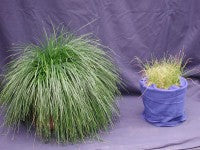 Nitrogen (N) - Nitrogen is a unique element, as optimum levels should vary dependent on the season. Nitrogen is required for topical growth within the plant and is such an essential nutrient because, without growth, you cannot get recovery from damage. It is also impossible to achieve a 'surface' without growth. The levels in the spring and summer should be greater when the plant is more actively growing.
Nitrogen (N) - Nitrogen is a unique element, as optimum levels should vary dependent on the season. Nitrogen is required for topical growth within the plant and is such an essential nutrient because, without growth, you cannot get recovery from damage. It is also impossible to achieve a 'surface' without growth. The levels in the spring and summer should be greater when the plant is more actively growing.
Nitrogen is probably the most used and abused nutrient in turf management, and the following factors should be remembered when specifying your fertiliser:
• There are four main sources of nitrogen - nitrate NO³, ammonia NH³, urea (NH2)2CO and methylene urea
• The plant only takes up nitrogen through the roots in the form of nitrate
• All forms of nitrogen, other than nitrate, have to break down to nitrate before they can be taken up by the plant, this is what leads to the different release times of different fertilisers
• The release times of the main sources of nitrogen are: nitrate - four weeks, ammonia - six weeks, urea - ten weeks and methylene urea - twenty weeks
• Nitrate is acidic, as are most forms of ammonia. Sulphate of ammonia will form sulphuric acid. Urea is slightly alkaline
If a fertiliser contains high levels of nitrate it will have high impact, but it will not last as long as a fertiliser that contains high levels of urea.
When the dormant season is approaching, I will always recommend a fertiliser that is reasonably rapid release as this will ensure that, if the weather turns cold, there is not unreleased nitrogen in the soil that could be released if a warm period occurs during the winter.
The choice of form of nitrogen can benefit the turf in other ways. If you have a potassium deficiency, opt for potassium nitrate as you will be getting two benefits in one. Conversely, if you have a black layer issue, caused by high levels of sulphur and iron, avoid the use of sulphate of ammonia as this contains sulphur and will make the problem worse.
As a general point, plants cannot absorb granules, they can only take up liquids, so ALL fertilisers are liquid but some are applied in the form of a granule.
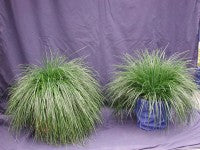 Phosphorus (P) - Phosphorus is required for root development in both mass and length. It is also involved in the process of photosynthesis. Other benefits that the plant achieves from phosphorus include an increased ability to withstand stress. Phosphorus is, however, very insoluble and does not move freely within the soil. A plant can only draw phosphorus from 1mm away so, if the plant has poor root development, it cannot locate and absorb the phosphorus. Therefore, it cannot develop roots and you end up with a vicious circle which results in poor root development.
Phosphorus (P) - Phosphorus is required for root development in both mass and length. It is also involved in the process of photosynthesis. Other benefits that the plant achieves from phosphorus include an increased ability to withstand stress. Phosphorus is, however, very insoluble and does not move freely within the soil. A plant can only draw phosphorus from 1mm away so, if the plant has poor root development, it cannot locate and absorb the phosphorus. Therefore, it cannot develop roots and you end up with a vicious circle which results in poor root development.
If this problem occurs I would recommend the use of foliar phosphorus, as this will be taken up by the leaf and promote root development. This will, in turn, help the plant to utilise the phosphorus within the rootzone.
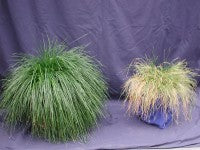 Potassium (K) - Potassium is essential for disease management, as it will not only help with disease recovery but also with disease resistance. Potassium will combine with calcium to form calcium pectate which is required by the plant to form a 'scab' over wounds. These wounds can have been caused by either mechanical or fungal attack.
Potassium (K) - Potassium is essential for disease management, as it will not only help with disease recovery but also with disease resistance. Potassium will combine with calcium to form calcium pectate which is required by the plant to form a 'scab' over wounds. These wounds can have been caused by either mechanical or fungal attack.
I have known several course managers who have resisted using a fungicide and applied a high rate of potassium when they first identify disease. This has been successful in terms of the plant, the environment and also, importantly, their budget.
Potassium is available in many forms and these include potassium nitrate, potassium sulphate, potassium oxide and potassium chloride. For cool season grasses the chloride, which is widely used in agricultural fertilisers, should be avoided as the salt index is too high. The sulphate should be avoided if you have a medium to high risk of black layer although, as I will discuss later, sulphur is a vital part of the process.
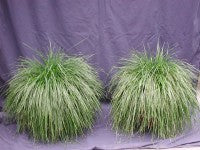 Calcium (Ca) - Calcium is the single most controversial element in turf management. For many years, if anyone had suggested to a course manager that he should apply calcium he would have been escorted from the premises. However, it is now widely accepted that the turf plant has a requirement for calcium, which should be balanced against the risk of making the rootzone so alkaline that the coarser grass varieties are encouraged.
Calcium (Ca) - Calcium is the single most controversial element in turf management. For many years, if anyone had suggested to a course manager that he should apply calcium he would have been escorted from the premises. However, it is now widely accepted that the turf plant has a requirement for calcium, which should be balanced against the risk of making the rootzone so alkaline that the coarser grass varieties are encouraged.
Calcium is essential in the formation of strong cell walls that are better able to withstand disease attack - the thicker cell walls also ensure that the plant has a stronger more upright leaf which will help to provide a better surface.
As mentioned in the section on potassium, calcium also helps the plant to recover from disease attack.
Having outlined the importance of calcium I would stress that, in twenty eight years in the industry, I have never seen a soil analysis that I felt indicated the use of bulk calcium. The normal requirement for turf is a liquid at 20 litres per hectare. If this is a 10% calcium, this will give two kilos of calcium per hectare, this will not effect the pH.
Calcium comes in many forms from the highly soluble and, consequently, instantly available to the virtually insoluble forms which will give a slow release. Calcium is also available linked to other nutrients, such as calcium nitrate, which is linked to nitrogen and is a good source of calcium for the turf. Or, it can be calcium chloride which, generally, is not a good source for turf as it has too high a salt index and can desiccate the leaf.
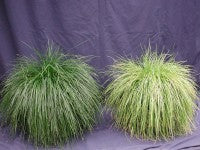 Magnesium (Mg) - Magnesium is required for chlorophyll production and root development. Particular care should be taken when tank mixing magnesium as it tends to react with potassium and goes thick in the tank.
Magnesium (Mg) - Magnesium is required for chlorophyll production and root development. Particular care should be taken when tank mixing magnesium as it tends to react with potassium and goes thick in the tank.
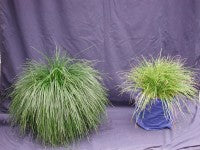 Sulphur (S) - Trials at the Yara Phosyn laboratories demonstrated that sulphur is essential for the health of the turf plant and, without sulphur in the rootzone, the plant could not take up the nitrogen and growth was limited. But, once again, turf management is a complex balancing act because too much sulphur within the rootzone can, if linked with excess iron, cause black layer.
Sulphur (S) - Trials at the Yara Phosyn laboratories demonstrated that sulphur is essential for the health of the turf plant and, without sulphur in the rootzone, the plant could not take up the nitrogen and growth was limited. But, once again, turf management is a complex balancing act because too much sulphur within the rootzone can, if linked with excess iron, cause black layer.
Again, it is very rare that a turf manager will need to purchase sulphur to rectify a sulphur deficiency, as sulphur is available linked to so many other nutrients required by turf.
Three obvious options are to use a balanced fertiliser where the potassium is derived from potassium sulphate, or to use either sulphate of ammonia as a nitrogen source or, thirdly, if you have an iron shortage, use ferrous sulphate.
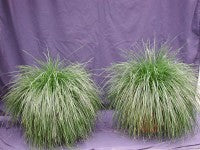 Zinc (Zn) - Zinc is required for the production of proteins and is vital for the plant to reach maturity with adult strength. The Yara Phosyn trials showed that turf plants grown without zinc were stunted and weak.
Zinc (Zn) - Zinc is required for the production of proteins and is vital for the plant to reach maturity with adult strength. The Yara Phosyn trials showed that turf plants grown without zinc were stunted and weak.
As Zinc has a very high atomic weight (65.38) it is virtually impossible to 'flush' it through the rootzone so, if you have an excess which can lock up phosphorus, calcium, magnesium, manganese, copper and iron are the best options to ensure that no more zinc is applied, and to increase the cec of the rootzone so that the amount of zinc is proportionally less than the other nutrients.
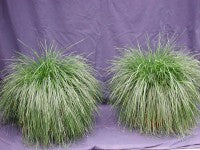 Manganese (Mn) - Excess manganese can be toxic to the turf, so the safest option is to apply this nutrient in a foliar form so that the soil levels do not increase. Manganese is required for the production of chlorophyll, so it will help provide good colour. It is also required for the uptake of nitrogen. Manganese is a required trace mineral for all known living organisms.
Manganese (Mn) - Excess manganese can be toxic to the turf, so the safest option is to apply this nutrient in a foliar form so that the soil levels do not increase. Manganese is required for the production of chlorophyll, so it will help provide good colour. It is also required for the uptake of nitrogen. Manganese is a required trace mineral for all known living organisms.
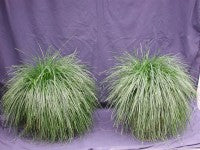 Copper (Cu) - Copper has numerous functions within the plant, but is primarily responsible for root metabolism, the utilisation of nitrogen and for reproductive growth and tillering. A shortage of copper is often identified by a thin sward.
Copper (Cu) - Copper has numerous functions within the plant, but is primarily responsible for root metabolism, the utilisation of nitrogen and for reproductive growth and tillering. A shortage of copper is often identified by a thin sward.
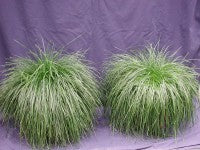 Iron (Fe) - After the primary nutrients, Iron is probably the most widely used element in turf management, the main reasons being that it is good for hardening the turf and, so, assisting with disease resistance. It also provides colour. Most turf managers are now using chelated iron rather than ferrous sulphate. The reason for this is that black layer is created by excess iron and sulphur with insufficient oxygen, so the use of ferrous sulphate is applying two of the elements of black layer. If black layer is a potential problem, colour can be increased with the application of other nutrients such as manganese.
Iron (Fe) - After the primary nutrients, Iron is probably the most widely used element in turf management, the main reasons being that it is good for hardening the turf and, so, assisting with disease resistance. It also provides colour. Most turf managers are now using chelated iron rather than ferrous sulphate. The reason for this is that black layer is created by excess iron and sulphur with insufficient oxygen, so the use of ferrous sulphate is applying two of the elements of black layer. If black layer is a potential problem, colour can be increased with the application of other nutrients such as manganese.
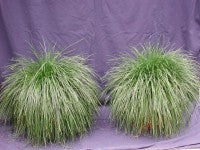 Boron (B) - You should be realistic with all soil reports. I have never seen turf in the UK that is showing symptoms of a boron deficiency. However, I always check that boron levels are not suddenly increasing as this would indicate a problem elsewhere, possibly a lockup of the other nutrients. Boron is required to assist with the uptake of all the nutrients.
Boron (B) - You should be realistic with all soil reports. I have never seen turf in the UK that is showing symptoms of a boron deficiency. However, I always check that boron levels are not suddenly increasing as this would indicate a problem elsewhere, possibly a lockup of the other nutrients. Boron is required to assist with the uptake of all the nutrients.
Sodium (Na) - Sodium is not a nutrient that is required by cool season grasses, but I suggest that you always test for it as, if levels are too high, this can be toxic to the plant. As a general rule, if the levels of sodium exceed the levels of potassium you have a problem, as both are salts and the plant will take up the most available salt - potassium has benefits to the plant; sodium is toxic to the plant.
Richard Lawrence, Managing Director, Environmental Turf Technology Ltd.
Tel: 01524 381999
E-mail: ask@emailett.co.uk
